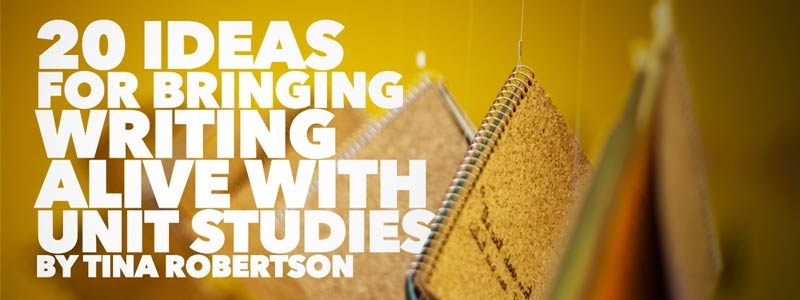Teaching your preschooler does not need to be a daunting, dreadful, intimidating task. My goal is to encourage you to realize that you can, in fact, teach your preschooler the skills needed to grow and mature. After receiving a Bachelor’s Degree in Christian Ministries, with a Concentration in Education, I was provided many opportunities to work with young children in different settings, all over the world. What I now realize after these experiences is that it is quality rather than quantity that matters when teaching this age group. Any parent with a willingness and desire to teach their child preschool is already equipped to do so. I hope to encourage you that you do have what it takes and with a few, simple, easy steps, you can provide a fun and educational experience for your child they will never forget! I know, from experience, that some preschools last for an entire day. Some run half days. This makes many parents who are hoping to recreate the preschool experience at home, nervous. They tend to feel the need to do so much more than what is necessary. What we need to realize, is that a majority of preschools are generally a daycare with preschool services intertwined. The entire day at a preschool is indeed structured, but that is only because it has to be, with that many children! Other preschools might be structured in an actual classroom setting but they are generally only two and a half hours long, meeting only two or three times a week. This may ease some parent’s minds, but even in this setting, the entire time is not dedicated to sitting down with formal instruction.
In reality, only twenty to thirty minutes is devoted to having the children seated. The rest of the activities provide children the opportunity to be active and to learn through play. There are some excellent programs and preschools available and it is a wonderful option for many families. But for the parent who has the opportunity to teach their child preschool at home, I hope to encourage you that you have what it takes! And, that you can do it. In reality, you don’t need to feel pressured to buy a hundred dollar curriculum that you would feel guilty not completing if you didn’t finish each page, or every assignment!
I will share with you Five Simple Activities that can be incorporated into your preschooler’s week. I suggest providing these opportunities three times a week, but you may certainly do more if time permits! The six activities are Circle Time, Name Practice, ABC Activities, Story Time and ‘Play and Learn.’
CIRCLE TIME
Formal preschools generally have Circle Time to provide an opportunity for children to get out of their seats and in a circle on the floor in an engaging and educational manner. Even though you probably will only have one (or possibly two) preschoolers in your home at a time, you can still effectively incorporate Circle Time into your preschool routine. This is the time that songs, numbers, colors, shapes and Bible principles are presented. About 1/3 of the learning is accomplished during Circle Time. I suggest having a special space designated in your home and used each preschool session for Circle Time. The following materials are ideal for decorating this space and can be purchased inexpensively online or at local discount stores. Or, if time permits, they can easily be created from online templates or on simple poster board.
Suggested Circle Time Materials
1- Bible Verses
2- Number Chart: 1-20
3- Geometric Shapes Chart 4- Weather Chart
5- Calendar
1- Preschool is not too early to begin Bible memorization. I suggest using a scripture, or a portion of scripture that begins with the Letter of the Week, (this concept is discussed later). “All Have Sinned and Fall Short of the Glory of God, (Romans 3:23),” is great for “A” week. If too little, they could simply memorize the first three words, “All Have Sinned.” Write the verse on a 3×5 card and hang it up in your Circle Time Area or print out a copy in a large, easy to read font.
2- Having a simple number chart hanging up helps counting go smoother during circle time.
3- Geometric Shapes Chart: Keep it simple. Display a chart with a heart, square, circle, rectangle and octagon. I suggest having the names of the shapes written on there as well.
4- Weather Chart: This can be made simply out of card stock or there are several inexpensive kits available online. Write in Permanent Marker: Today’s Weather. Provide several strips of laminated paper or cardstock with several weather patterns. Sunny, cloudy, rainy, snowy, etc. Include a bright colorful image and corresponding word for each one. Make a pocket style chart or use Velcro to attach the images each day. Make a pocket out of a folder to hang on the wall to keep them in and allow the children to interact with the “weather wall” each Circle Time.
5- Calendar. A large wall calendar can be purchased online or made inexpensively. The best is a simple, large calendar with the only days of the week written in. Then you have months and days stored separately to be used during Circle Time. You can have a pocket style calendar or you can laminate the numbers and months and attach Velcro to each piece. I also would store these in a folder, hanging on the wall. You can reuse the numbers each month, or, if you are feeling adventurous you can make or print out numbers for each month with an appropriate theme. Hearts for February, flowers for May or American flags for the month of July!
Suggested Circle Time Structure
Even though you will cover a large amount of material during Circle Time, it can be done quickly, efficiently and effectively. The important thing is to stay on task and move from one skill to the next smoothly and quickly. By not staying on one task too long, the chance of your child becoming easily distracted will be a minimum. The following is how I approach our Circle Time.
Prayer
Bible Verse: If you have chosen a verse to go along with your letter of the week, or another one, this is the time to go over it. Read it two or three times with your child. Encourage them to say it with you. If the topic seems over their head, explain it to them in simple terms that they can understand.
Songs and Finger Plays: To keep the child engaged, we generally will sing two or three songs that begin with the letter of the week. “Bringing Home my Baby Bumblebee” or “London Bridges” for “B” week or “Twinkle, Twinkle Little Star” for “S” or “T” week. Finger plays are simply songs in which the child uses his fingers, such as “1 Little, 2 Little, 3 Little Indians.” Use simple songs from your childhood or search online for each week. You can use video clips from sites such as YouTube to create a playlist with several songs showcasing the letter of the week. Then share during Circle Time or another time during the day.
Count 1-20: Point to each number on the chart. Have your child count with you from 1-20. If they are very young, begin counting to five and work your way up. Counting will be encouraged also in Calendar Time and Play and Learn Time. Not much time needs to be devoted to this chart. The key here is just to provide the opportunity each day.
Shapes: Point to each shape and name the shape. Go over each shape quickly and smoothly.
Weather: This engaging activity does not need to take long. It is important because it allows the child to become active and involved. Allow the child to look out the window or step outside and tell you what the weather is for the day. They then can actively find the appropriate picture and place it on the wall where it says, “Today’s Weather Is…”
Calendar: Once you have a calendar prepared for your space, it is easy to incorporate it daily into your Circle Time. Even though you won’t be having your child participate in Circle Time seven days a week, you can simply add numbers to the calendar up until the days you are planning on having Circle Time. During Circle Time each day, the child can find the number for the day and place it on the calendar. I begin calendar time by singing the days of the week song, while pointing to each day written out on the calendar. They then find the appropriate number and place it on the calendar. We then count together from one to the number of that day while I point to each number. At that age, my boys enjoyed counting practice on the calendar! I finish this activity by having me say the complete date and have the child repeat it after me. “Today is… January 12, 2013.”
In my next post of this series, I will share more ideas on how to teach on the cheap, preschool style!





